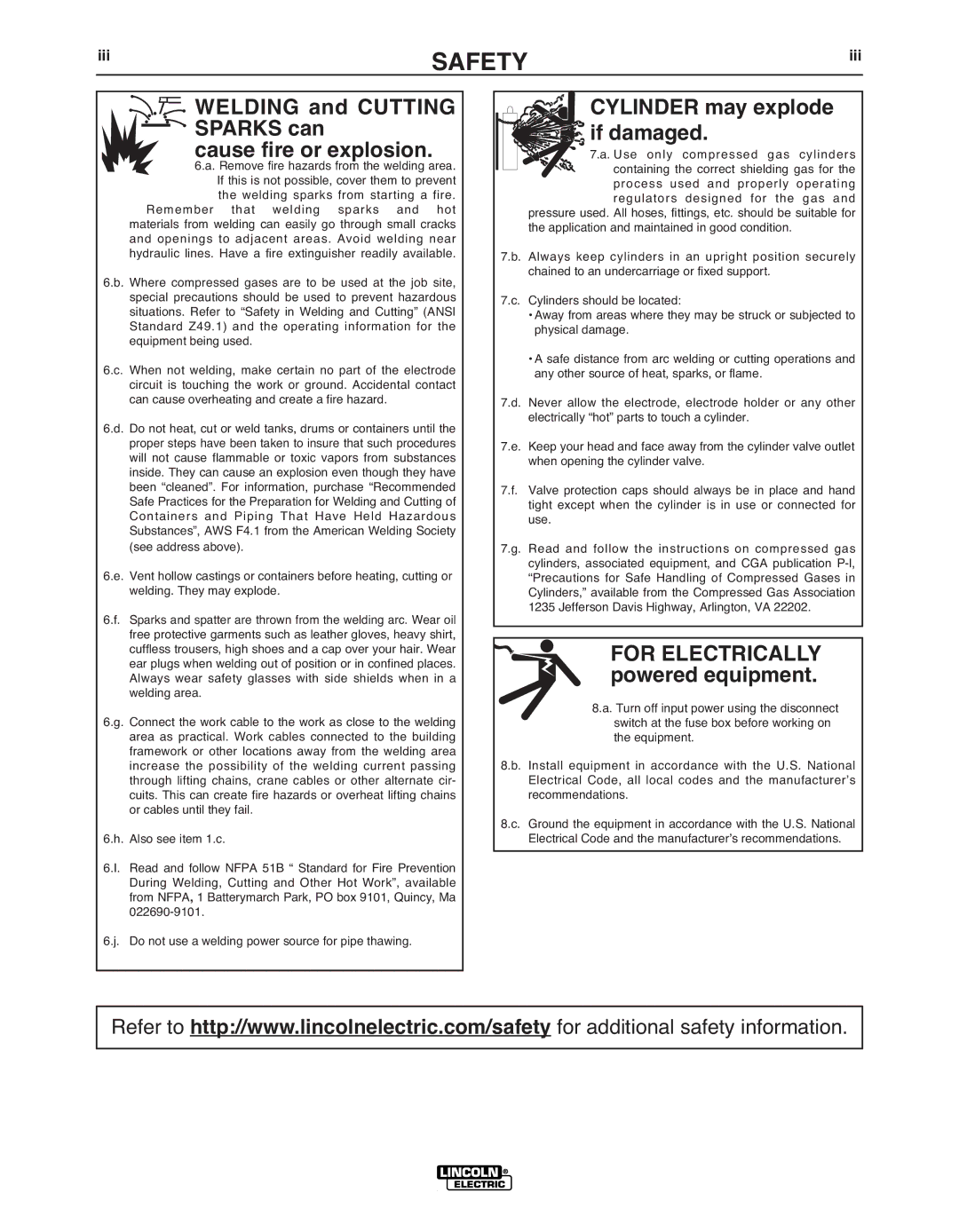11572 specifications
Lincoln Electric 11572 is a high-performance welding machine that has garnered attention in the industry for its reliability and innovative technologies. Primarily designed for MIG welding, this unit stands out due to its combination of portability, ease of use, and superior welding capabilities. It caters to both professional welders and DIY enthusiasts, making it a versatile option for a variety of welding tasks.One of the key features of the Lincoln Electric 11572 is its compact design. Weighing in at just over 30 pounds, it is lightweight enough for easy transportation, allowing users to take it to job sites or different workshop locations without hassle. Despite its portable nature, it does not compromise on performance, providing a robust output that is capable of handling a range of materials, including mild steel, stainless steel, and aluminum.
The machine is equipped with a variable voltage control, which allows users to adjust the output to suit different welding thicknesses and types. This flexibility aids in achieving optimal welds, ensuring a good balance between penetration and bead aesthetics. Furthermore, the Lincoln Electric 11572 features a built-in contactor safety switch which enhances user safety by preventing wire feeding when the torch trigger is not activated.
Technology plays a vital role in the Lincoln Electric 11572’s performance. The unit utilizes the company's proprietary welding technology, which ensures a stable arc and reduces spatter for cleaner welds. The efficient wire feed system works seamlessly to maintain a smooth and consistent feed, reducing the risk of jams and enhancing overall productivity.
Additionally, the machine comes equipped with a user-friendly interface, including easy-to-read settings and controls. This makes it accessible for welders of all skill levels, from beginners to experienced professionals. The welder's versatility is further amplified by its ability to handle gas or gasless welding, depending on the user's preference and project requirements.
In conclusion, the Lincoln Electric 11572 is a dependable solid MIG welder that offers a blend of portability, safety, and advanced welding technology. Its robust features and user-centric design make it an excellent choice for a wide range of applications, enabling users to achieve high-quality results with ease. Whether for industrial use or personal projects, this welding machine promises to deliver performance that meets and exceeds expectations.

